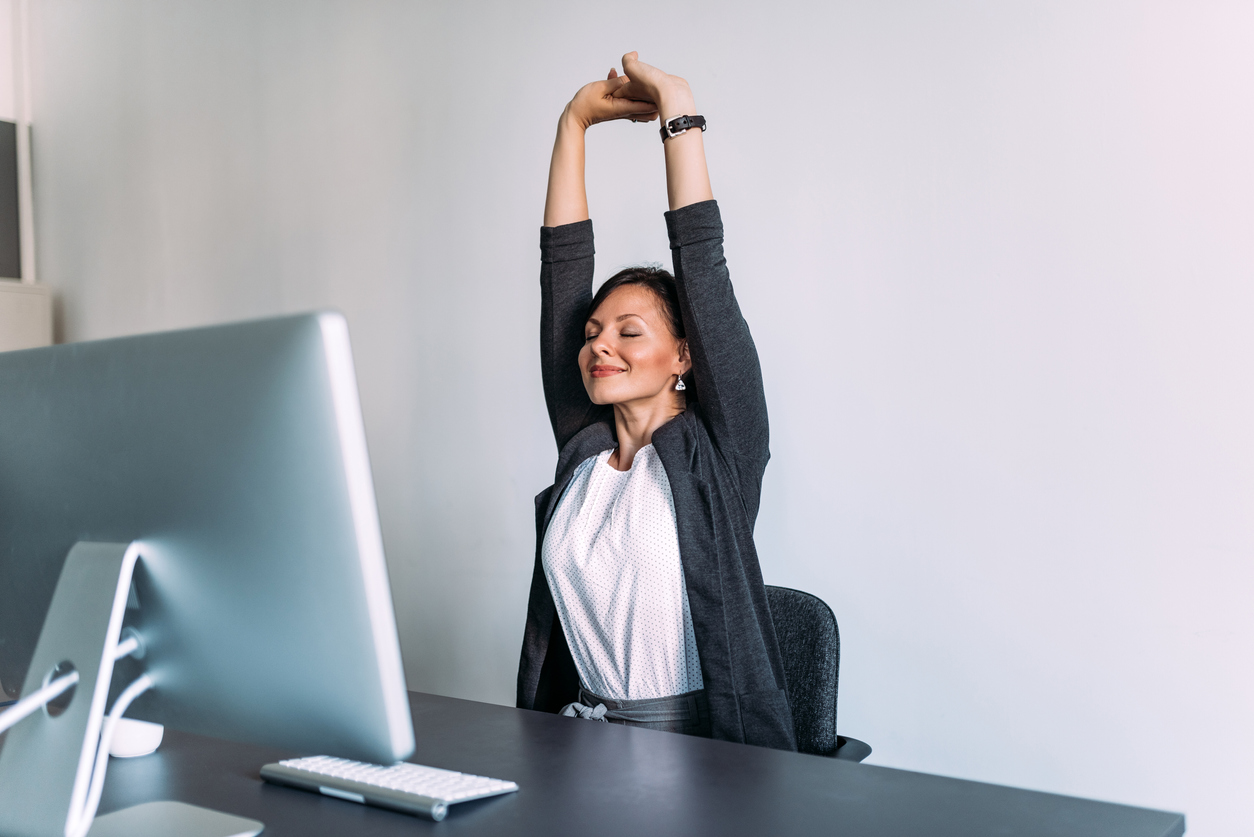
New year, new posture
Is improving your health and wellbeing a goal for 2020?
Fad diets and extreme exercise regimes can quickly burn out as New Year’s resolutions wane. But making small, sustainable, daily changes can make all the difference.
Like maintaining good posture habits at work.
Proper body alignment comes with a range of health benefits, the most obvious being pain and injury prevention. But did you know that maintaining good posture can also make you happier, more confident and more productive?
Together with some other small tweaks, you and your team can lead a happier, healthier office life, which will inevitably spill over into all areas of your life.
Here are our Top 10 Tips to improve office health and wellbeing:
1. Sitting pretty
There’s more to sitting than just plonking yourself down in a chair – especially when you work in an office environment where you spend the majority of your time at a desk.
Yes, there is a right and a wrong way to sit! Here are our must-dos:
– Your eyes should be level with the top of your computer monitor
– Your screen should be an arm’s length away
– Your forearms should be parallel with the floor
– Your shoulders should be relaxed – not hunched up
– Your mouse and keyboard should be within easy reach
– Sit up straight, but not too straight! The back of your chair should be slightly reclined at a 100-110 degree angle, and the natural curve in your lower back should be supported
– Your feet should be flat on the floor
– Your thighs should be at a 90 degree angle from your body (you might need to use a footrest to achieve this if -you are shorter, or a higher desk if you are taller)

2. Chair up
Not all office chairs are created equal. The better the design, the easier it is to maintain correct posture.
Think comfortable, adjustable and supportive. The backrest should support both the lower and upper back, the seat should be adjustable both in terms of height and recline, and it should be sufficiently padded.
Our ergonomic office chairs encourage proper body alignment, doing much of the work for you.
The award winning Sidiz T40 offers a range of specifications to suit a wide variety of environments, purposes and budgets,and is definitely worth checking out.
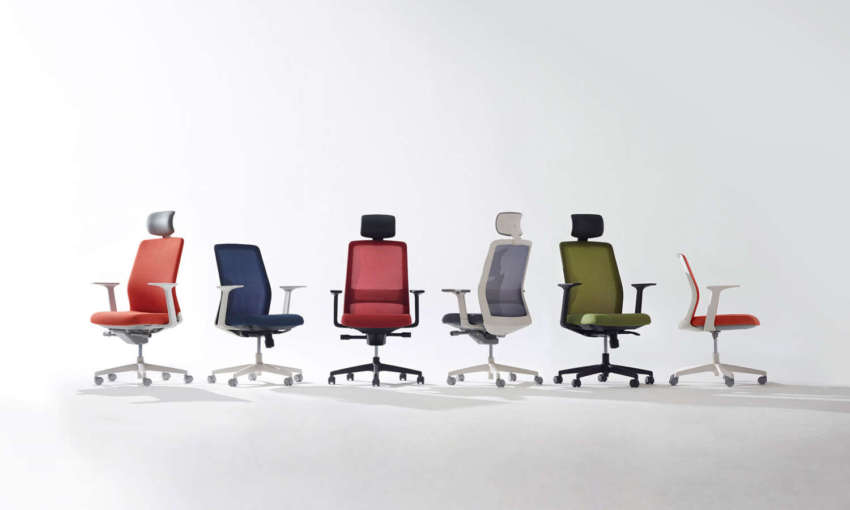
3. Get up, stand up
While maintaining the right sitting posture is important, sitting all day, every day, is not ideal.
Sitting is linked to obesity, heart disease, diabetes and other health problems. Whereas studies show that alternating between sitting and standing can reduce the risk of diabetes, weight gain and heart disease, along with a host of other benefits, including increased productivity and a higher overall quality of life.
Sit-stand desks are becoming more and more popular – and agile, allowing you to switch between sitting and standing positions with ease. Like the Motiv Worksystem, which supports a variety of working styles and height needs.
And the easier it is to use, the more likely you are to use it, right?
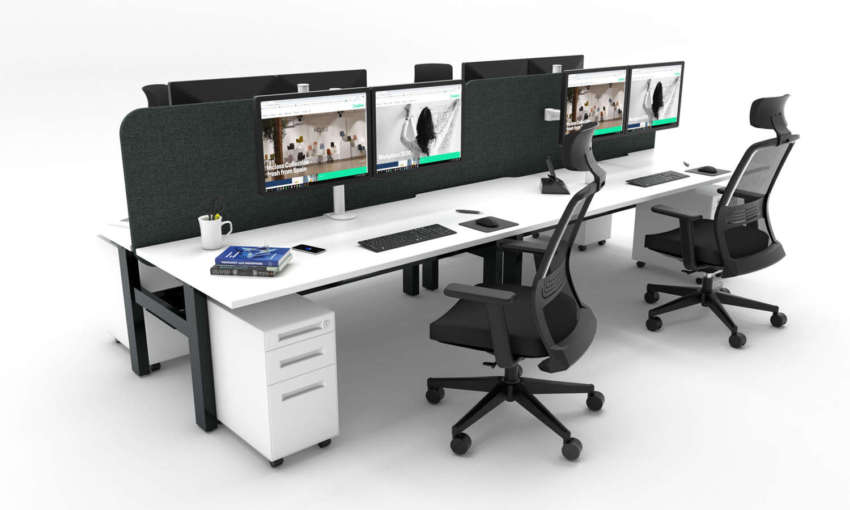
4. Take a stand
Like sitting, it’s important to maintain the right posture when working at a standing desk.
– Stand up straight, with your shoulders back, but relaxed.
– Adjust the standing desk to your elbow height
– Bend your elbows at a 90 degree angle, ensuring your forearms are parallel with the desk surface
– Keep your wrists neutral – they shouldn’t be inclined up or down
– Make a note of your customised desk height so you can easily switch to standing mode
5. Stay level-headed
At rest, our eyes look straight ahead and cast down. So, it’s important to position your monitor in a way that is attuned to this normal line of sight.
Position your monitor so that the top edge (not the middle) is in line with your eyes, to keep your neck in a neutral position.
In the ‘old days’ you might have used telephone books to prop up your screen but nowadays there are much more sophisticated options available now.
Like our Ar-ray Monitor Arms, which are easily adjustable and feature a quick release system allowing the monitor to be attached/detached with the touch of a lever.
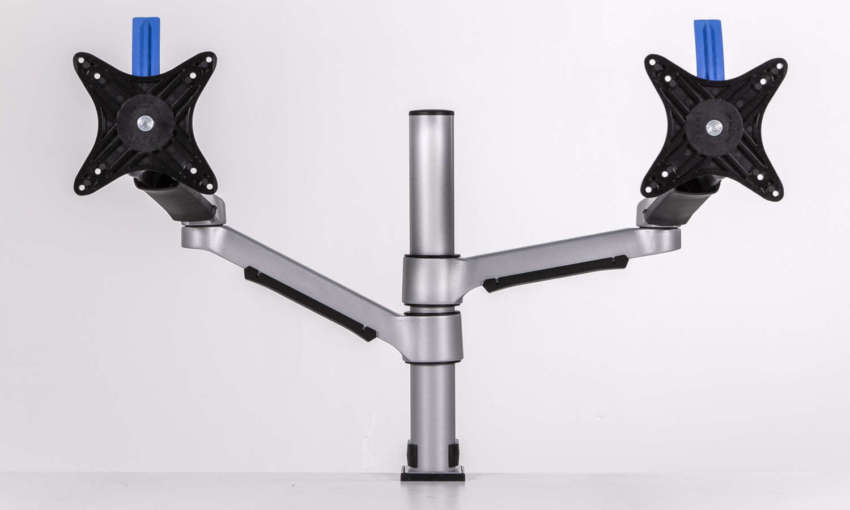
If you are working on a laptop, using a seperate keyboard will allow you to raise the screen to eye level.
The Gustav Original is a great tool for achieving this, while also providing storage for the activity based worker.
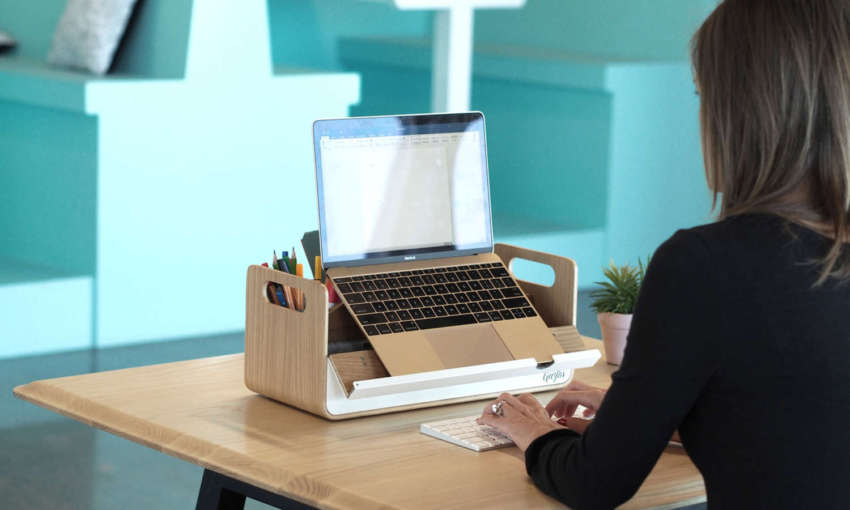
6. Pack a snack… or two
It goes without saying that maintaining a healthy diet is one of the most important and impactful things you can do for your overall health and wellbeing.
But, it’s easy to let things slip when you’re at work. The midafternoon slump can have you reaching for the nearest sugary snack you can lay your hands on – be that from the vending machine or the nearest food outlet.
Having a stash of nutritious nibbles to hand will stop you from seeking out unhealthy options.
Don’t have a permanent work station? Slip some bliss balls and muesli bars into a Gustav, along with your other office essentials – the perfect solution for co-working and hot-desking environments.

And don’t forget to stay hydrated. Get yourself a drink bottle that inspires you to drink more – be that a pink leopard print design with a straw, or a large dumbbell bottle that holds your daily quota. Better still, keep yourself moving with regular breaks from your desk to fill up your glass.
7. Move it or lose it
They say your best position is your next position. In other words – keep moving! Ideally you should change position every 30 minutes. The more often you move, the better your circulation and concentration. (Shifting from one elbow to the other doesn’t count.)
Stand up and have a quick stretch, pop to the kitchen to get a drink, stroll down the corridor, or take a walk up and down a flight of stairs. Getting up out of your seat forces you to reposition yourself when you sit back down, avoiding the dreaded slouch.
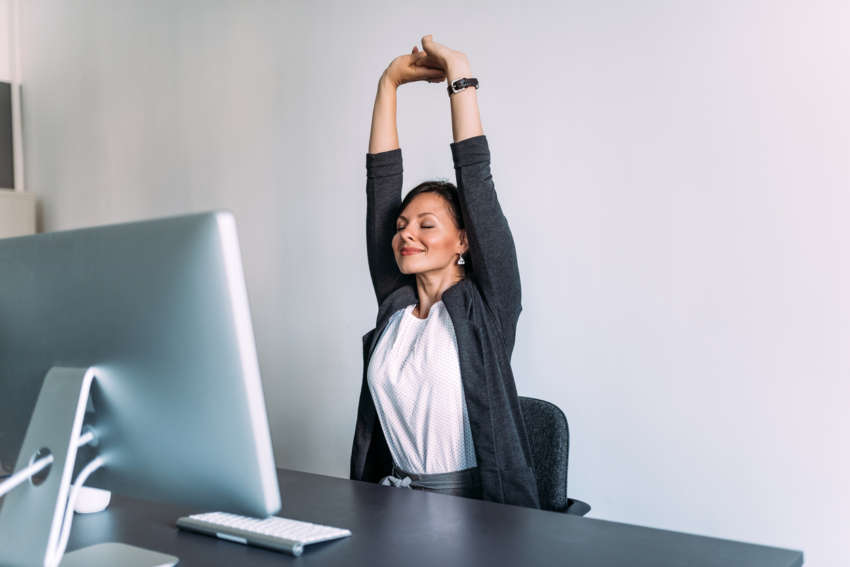
8. Take a break
If you are working for prolonged periods of time, without taking a break, you might think you are getting lots done, but the opposite is actually true.
The human brain isn’t designed to focus for eight hours at a time. We are more productive and engaged when we are taking regular breaks.
Take a lunch break, away from your desk – even if you’re really busy and can’t stop for long, if you physically remove yourself from the task at hand, you will return to it refreshed.
Need to ask a colleague something? Walk over to their desk and have a conversation rather than sending an email.

9. Step up your game
There’s movement, and then there’s exercise that gets your heart rate up.
Incorporating exercise into busy lives can be challenging, but by doing a little here and there as part of your daily routine, it soon adds up.
Take a brisk walk at lunchtime, use the stairs instead of the lift, leave home a little earlier and park the car an extra block away. And what about a walking meeting? Walking and talking can also encourage creativity and generate new ideas.
For those wanting a dedicated fitness regime, lunchtime is a great time to do a workout, as it boosts your afternoon productivity.

10. Take it home
And, lastly, it’s really important not to undo all the good postural work you do in the office, by letting it slip at home. Sitting in front of the TV for hours can be just as detrimental to your alignment as sitting at a desk if you’re slouching and slumping. Try and maintain a good posture when you’re relaxing at home, and take regular breaks from sitting.
Whether it’s sitting at the dinner table or driving to work, be a ‘conscious sitter’ and you will reap the rewards.
